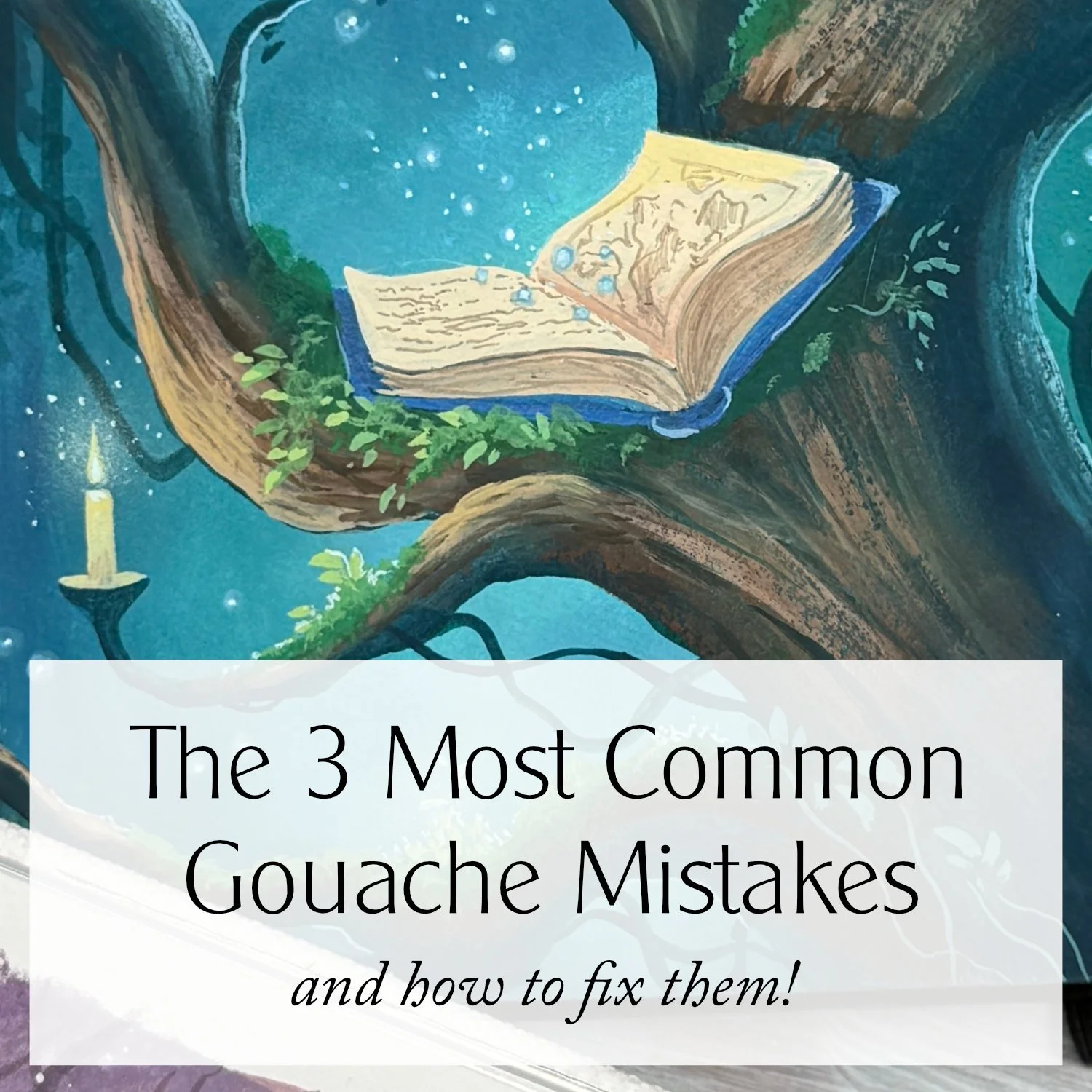The 5 Most Common Layering Problems With Gouache and How to Fix Them
If you’re new to gouache, or finding some of it’s quirky ways frustrating, you will likely have encountered some problems with layering. After thousands of hours spent painting, I’ve found that these are the 5 most common problems you’ll face and I’ll share my favorite ways to fix them for headache-free layering.
Problem #1: The pigment that you are using is naturally semi-transparent or transparent.
Not all pigments are created equally, and some colors naturally give better coverage than others. Check the tube to see the opacity of the pigment so you can plan the best way to use the color in your work.
Yellow pigments are often semi-transparent, which is sometimes shown with a half-filled square on the tube like this: ◩. This means that they wont be able to fully cover stronger colors, leaving some of the layer underneath showing through.
TIP: If your paints aren’t marked for transparency it can be super helpful to swatch them on a toned paper to get an idea of which colors provide less coverage.
Solution: Add a little titanium white to your color to boost the opacity. Titanium white is incredibly opaque, and adding a little to your mixture will boost the opacity, giving you better coverage.
Problem #2: Your paint is not the correct consistency.
If the paint mixture is too thin, the extra water will reactivate the layer underneath and allow the colors to mix together. Extra water will also dilute the pigment and affect the opacity.
If the paint feels thick and plastic-y, it is likely too thick. Thicker paint is less likely to disturb the layer underneath, but will be difficult to move around on the page and leave undesirable texture in the paint surface once dry.
Solution: Always make sure you’re working with a creamy consistency of paint, adding just enough water to allow the paint to glide onto the paper like soft butter.
Problem #3: You are painting a really light color over a really dark color, or vice versa.
So yes, while we can paint lights over darks, some color pairings cause more problems than others. White is a really useful opaque color, but is reactivated easily, so adding dark colors over the top can often result in unintended mixing through the layers.
The same is true for painting white, or other pale colors, over strong colors such as red; you’ll often see a pinkish color rather than the bright white you wanted.
Solution: All pigments have their limits, and sometimes we need to use two coats of paint instead of one. The first coat should be completely dry before adding the second for a clean crisp layer of the intended color.
Problem #4: You are painting over wet paint.
Sometimes, in our haste, we can be tempted to continue adding paint to an area that’s still wet. The wet area will just eat your new color, making it disappear on the page. You’ll be tempted to use a thicker mixture of the color, but this will be too gloopy to stick to the wet page and therefor difficult to get off the brush.
Solution: Let the paper dry before continuing.
Problem #5: You are fussing at the page too much with your brush.
As soon as you introduce new paint to the page, the moisture is seeping down into the layers underneath. If you repeatedly touch the new, wet paint, it will start to disturb the layer underneath and the colors will mix together.
Solution: Apply the colors unhesitatingly and deliberately, and avoid going over the same area repeatedly. A light touch and brief contact with the page will produce the best results.
TL;DR
Layering with gouache doesn’t have to be stressful, and the more you paint, the more you will solve these problems without thinking about it.
The key to improving and becoming a more confident painter is not to stop mistakes from happening, but instead knowing how to fix them when they do.
If you want to save this page as a handy flowchart, you can download a copy here.
Happy painting!




